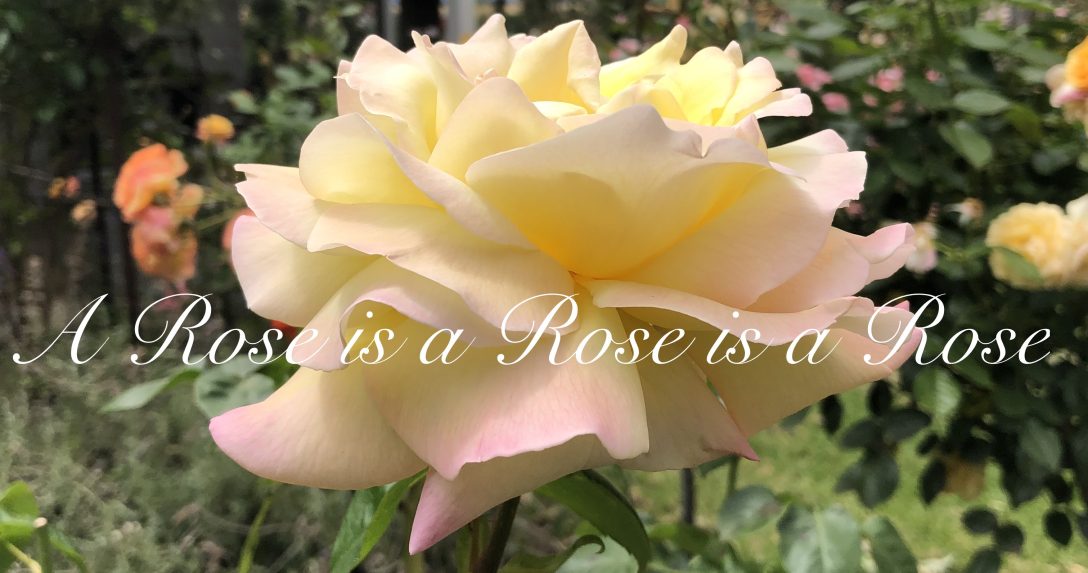
A favourite rose is difficult to define, but the Lady of Shalott® rose is a cherished rose in my garden. The photo above is the first bloom of the year and was taken in the shade on a cloudy day, so it does not highlight the golden glow these beautiful roses usually emit.

A romantic rose for several reasons, mainly due to the chalice-shaped blooms, loosely arranged petals, and divine colour. The name is from one of Alfred, Lord Tennyson’s poems to commemorate the 200th anniversary of his birth (1809-1892) The colour is highlighted by mid-green leaves that provide the perfect soft backdrop to the stunning copper, orange, and apricot blooms with golden-yellow underneath. Add a hint of spiced apple and clove fragrance, and one has a perfect rose.

The Lady of Shalott by William Holman Hunt 1905. Wadsworth Atheneum Museum of Art Connecticut US.

If I had a flower for every time I thought of you… I could walk through my garden forever.
Alfred Lord Tennyson

“I am half-sick of shadows,’ said The Lady of Shalott.”
Alfred Lord Tennyson

“And at the closing of the day
Alfred Lord Tennyson
She loosed the chain, and down she lay;
The broad stream bore her far away,
The Lady of Shallot.
The Lady of Shalott® rose ( (Ausnyson) can be grown in the garden but is better planted towards the back, used as a pillar climber, or grown in a container. I had the first Lady of Shalott growing in the garden but preferred to view it more closely, so I placed two in big pots at the back door. The orange-apricot rose blooms hang suspended from the softly arching canes, and the sunlight glows through the orange petals creating a spectacular effect. I have written a previous post about the Lady of Shalott Rose Who Killed The Lady of Shalott in December 2019. That particular post mentions that I was at the time waiting for the delivery of two new specimens. These sit in pride of place at the back door of the farmhouse. I walk past them many times a day, and I can also view them from the kitchen.

“For I dipped into the future, far as human eye could see,
Alfred Lord Tennyson
Saw the Vision of the world, and all the wonder that would be.”
Everything isn’t for everyone. Garden lovers, though, work hard to keep plants alive, gently nurturing them through drought, disease, pests and extreme conditions, so that certain plants become part of the family. The Lady of Shalott Rose is in this category. It is treasured, well looked after, and is always a constant source of delight.

Lady of Shalott by John William Waterhouse 1894. Leeds Art Gallery depicting Elaine of Astolat.

In similar colouring but not habit is ‘Joseph’s Coat Rose’. A truly spectacular rose in orange-apricot shades but also shows bright yellows to vibrant reds. The intensity of the colours will depend on the soil, climate, and the amount of sunlight. The three Joseph Coat roses in the garden are in large pots up against the concrete water tanks so they can climb on the wire weld mesh to cover the tank. I moved them to this position for more protection from the late afternoon sun that had burnt them in previous years.

Next year during winter dormancy my plan is to build a garden bed around the tank so these roses can be in the ground and have more room to spread. Joesph’s Coat rose is available from Silkies rose farm known as Rose sales online. It is described as
Joseph’s Coat is an ‘old’ favourite climbing rose which produces masses of yellow buds which age to apricot, then pink and finally finish crimson-red.
Silkies Rose Farm

David L. Armstrong bred Joseph’s Coat rose in the USA in 1963, and Herbert C. Swim in the USA in 1963. An unknown breeder introduced this one to Australia in 1965 as Joseph’s Coat. It is patented as a climbing Floribunda red blend rose. Joesph’s Coat has large blooms that, when fertilised regularly, will maintain a vibrant orange to red and crimson colouring in flushes all season. It has glossy dark green foliage, a fruity fragrance, and is tall with thorns and prickles – growing to 245 to 365cm.


All content Di Baker 2022
Images from the garden in early spring 2022
Painting sources Wikimedia.org


